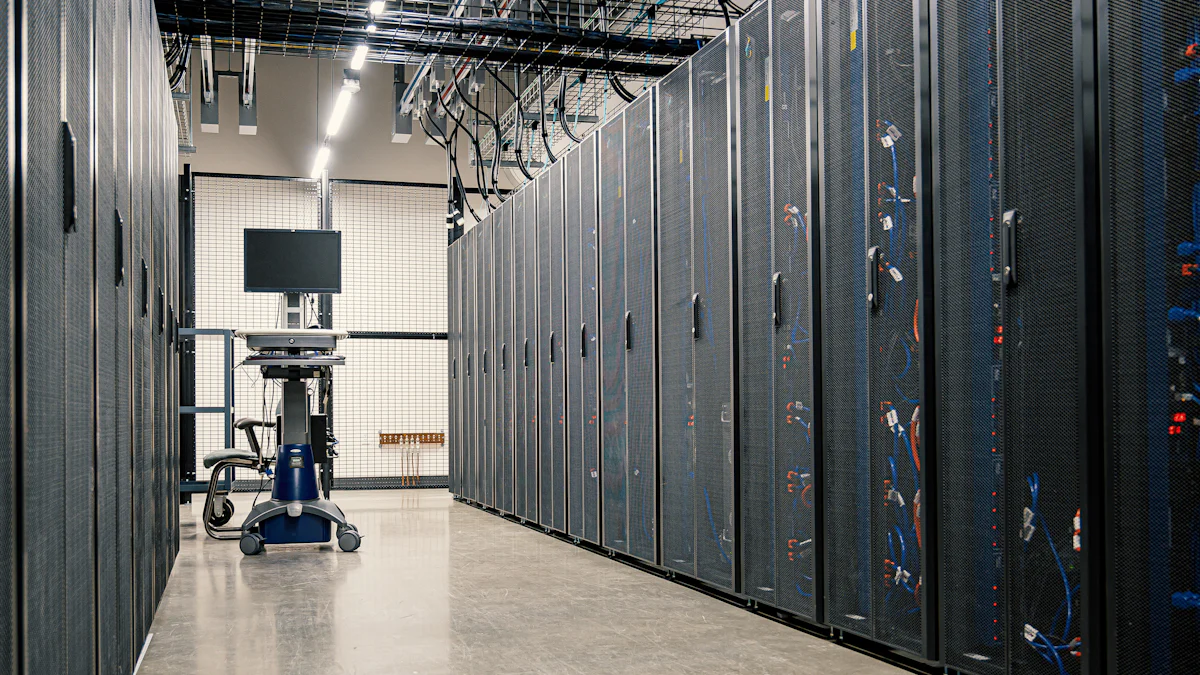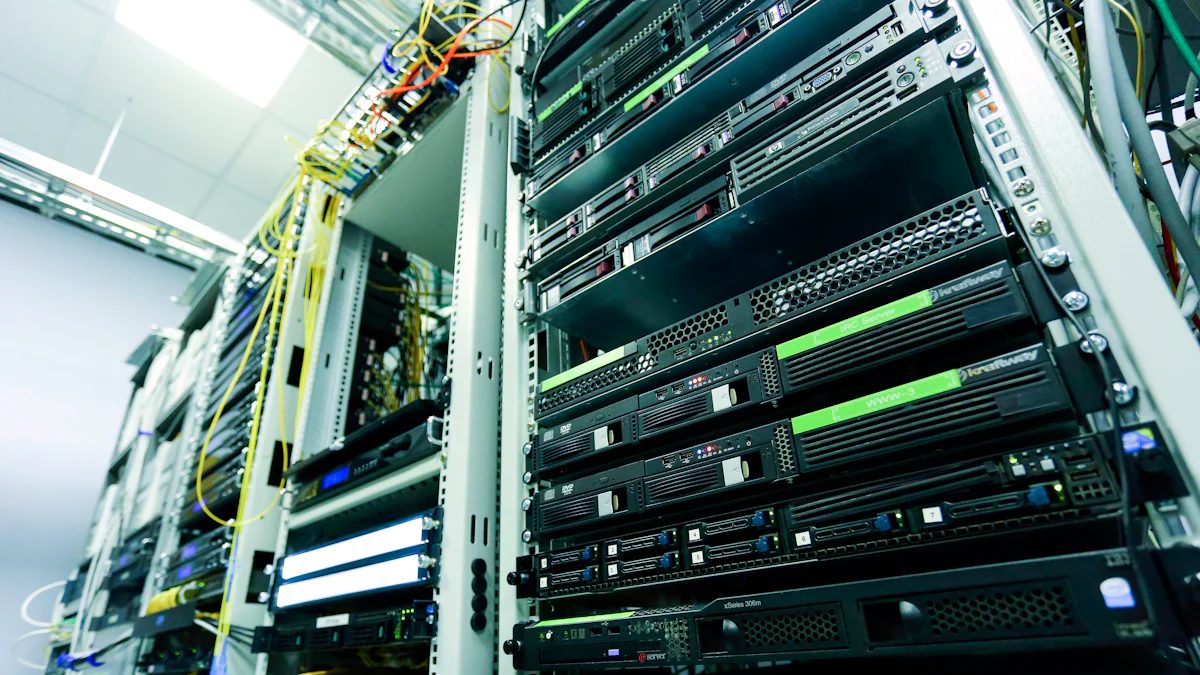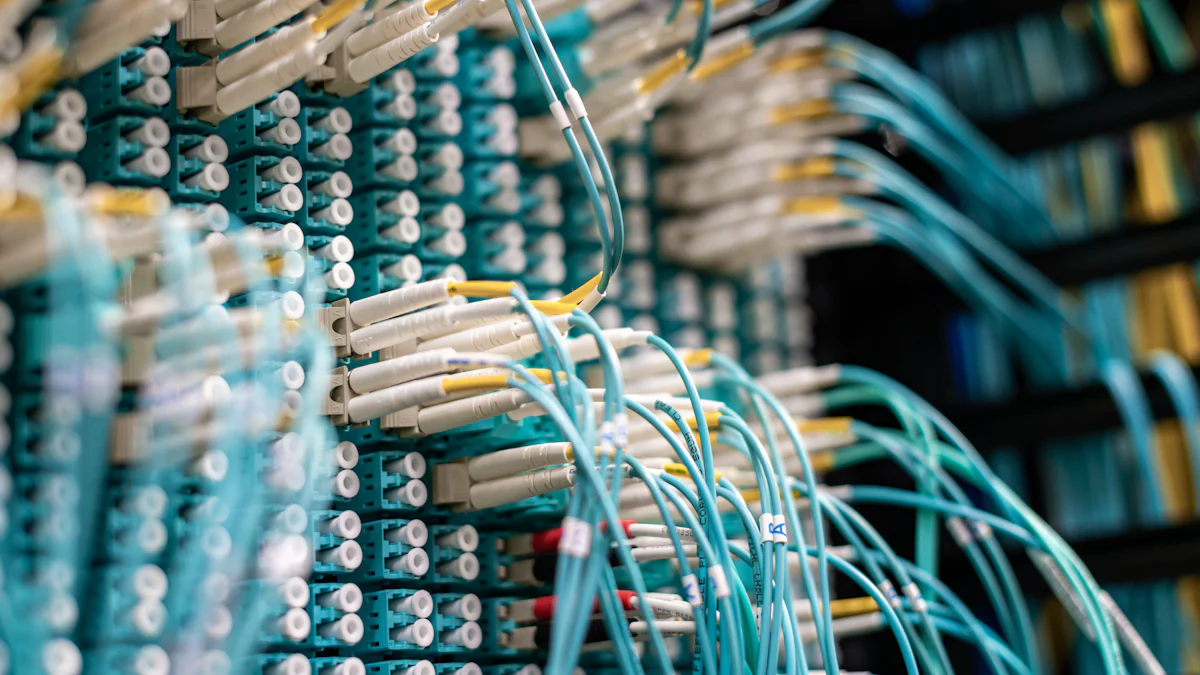
Metered PDU monitoring serves as a vital tool for managing power in data centers. It enables administrators to monitor energy consumption in real-time, ensuring efficient power distribution. This technology enhances operational visibility by providing actionable insights into power usage. Its reliability helps prevent downtime, making it indispensable for maintaining a stable IT infrastructure.
Key Takeaways
- Real-time monitoring of power usage through Metered PDUs helps identify inefficiencies, enabling administrators to optimize energy consumption and support sustainability goals.
- By tracking energy consumption patterns, Metered PDUs facilitate significant cost savings by minimizing unnecessary energy expenses and preventing costly equipment failures.
- Integration with DCIM software allows for centralized management of power and environmental data, enhancing operational visibility and enabling informed decision-making.
Understanding Metered PDUs

Key Features of Metered PDUs
A Metered PDU provides advanced functionalities that go beyond basic power distribution. These devices enable real-time monitoring of power usage, offering administrators precise insights into energy consumption. One of their standout features is individual outlet metering, which allows tracking power usage at the outlet level. This capability ensures better load balancing and prevents overloading.
Alerts and alarms are another critical feature. They notify administrators of potential issues, such as power spikes or overloads, enabling quick action to prevent downtime. Remote access and control further enhance their utility. Administrators can monitor and manage power distribution from anywhere, ensuring uninterrupted operations.
Integration with Data Center Infrastructure Management (DCIM) software is also a key feature. This integration provides a centralized view of power usage across multiple PDUs, simplifying management. Additionally, Metered PDUs support energy efficiency initiatives by identifying areas of excessive power consumption.
Metrics Monitored by Metered PDUs
Metered PDUs track several essential metrics to ensure efficient power management. These include voltage, current, and power factor, which help administrators understand the electrical performance of their systems. Monitoring these parameters ensures that the power infrastructure operates within safe limits.
Energy consumption is another critical metric. By measuring kilowatt-hour usage, Metered PDUs help identify energy-intensive equipment and optimize power allocation. Load balancing metrics are also monitored to distribute power evenly across outlets, reducing the risk of overloading.
Temperature and humidity sensors are often integrated into Metered PDUs. These sensors provide environmental data, ensuring that conditions remain optimal for equipment operation. Together, these metrics offer a comprehensive view of power and environmental conditions, enabling informed decision-making.
Benefits of Metered PDU Monitoring
Enhanced Energy Efficiency
Metered PDU monitoring plays a pivotal role in improving energy efficiency within data centers. By providing real-time insights into power consumption, it enables administrators to identify inefficiencies and optimize energy usage. For instance, it highlights underutilized equipment or systems consuming excessive power. This information allows for strategic adjustments, such as redistributing workloads or upgrading outdated hardware. Additionally, the ability to monitor power at the outlet level ensures that energy is allocated effectively, reducing waste and supporting sustainability goals.
Cost Savings Through Optimized Power Usage
Optimizing power usage directly translates to significant cost savings. Metered PDUs help administrators track energy consumption patterns and pinpoint areas where power is being wasted. This data-driven approach minimizes unnecessary energy expenses by ensuring that only essential systems draw power. Furthermore, the ability to balance loads across outlets prevents overloading, which can lead to costly equipment failures or downtime. Over time, these measures reduce operational costs and improve the overall financial efficiency of the data center.
Improved Operational Visibility and Decision-Making
Operational visibility is crucial for maintaining a reliable IT infrastructure. Metered PDU monitoring provides a comprehensive view of power usage and environmental conditions, such as temperature and humidity. This visibility enables administrators to make informed decisions about resource allocation and infrastructure upgrades. Alerts and alarms further enhance decision-making by notifying teams of potential issues before they escalate. With these tools, data center managers can proactively address challenges, ensuring uninterrupted operations and long-term reliability.
How Metered PDU Monitoring Works

Real-Time Data Collection and Analysis
Metered PDU monitoring relies on real-time data collection to provide actionable insights into power usage. These devices continuously measure electrical parameters such as voltage, current, and energy consumption. The collected data is processed and analyzed to identify patterns, inefficiencies, or potential risks. This real-time feedback allows administrators to respond quickly to power anomalies, ensuring the stability of the power infrastructure. By monitoring power usage at the outlet level, metered PDUs enable precise load balancing, which prevents overloading and optimizes energy distribution.
Integration with DCIM Software
Integration with Data Center Infrastructure Management (DCIM) software enhances the functionality of metered PDUs. This integration consolidates power and environmental data into a centralized platform, simplifying management tasks. Administrators can monitor multiple PDUs across different locations from a single interface. DCIM software also enables advanced reporting and trend analysis, helping data centers plan for future capacity needs. The seamless connection between metered PDUs and DCIM tools ensures that power management aligns with broader operational goals.
Advanced Capabilities Enabled by Monitoring Tools
Modern monitoring tools unlock advanced capabilities for metered PDU systems. Features such as predictive analytics and automated alerts empower administrators to address issues before they escalate. For example, predictive analytics can forecast potential overloads based on historical data, allowing proactive adjustments. Remote access further enhances flexibility, enabling administrators to manage power distribution from any location. These advanced capabilities ensure that metered PDUs not only monitor power but also contribute to a more resilient and efficient data center environment.
Choosing the Right Metered PDU
Key Factors to Consider
Selecting the right Metered PDU requires careful evaluation of several critical factors. Administrators should first assess the power requirements of their data center. This includes determining the voltage and current ratings needed to support the connected equipment. The type and quantity of outlets, such as C13 or C19, must also align with the devices being powered.
Compatibility with existing infrastructure is another essential consideration. The chosen PDU should integrate seamlessly with monitoring and management systems, including DCIM software. Additionally, administrators should evaluate the level of monitoring required. For instance, some environments may benefit from outlet-level metering, while others may only need aggregate power data.
Environmental conditions, such as temperature and humidity, should also influence the decision. PDUs with built-in sensors can provide valuable insights into these parameters. Finally, scalability is crucial. The selected PDU should accommodate future growth, ensuring long-term utility.
Matching Features to Data Center Needs
The features of a Metered PDU must align with the specific operational demands of the data center. For facilities with high-density racks, PDUs offering real-time monitoring and load balancing are ideal. These features help prevent overloading and ensure efficient power distribution.
Data centers prioritizing energy efficiency should opt for PDUs with advanced energy management capabilities. These devices can identify power-hungry equipment and suggest optimizations. For remote management, PDUs with remote access and control features provide added flexibility.
Administrators managing multiple locations should consider PDUs that integrate with centralized DCIM platforms. This integration simplifies monitoring and enhances decision-making. By matching PDU features to operational needs, data centers can achieve greater efficiency, reliability, and scalability.
Metered PDU monitoring remains essential for modern data centers. It enhances energy efficiency by identifying wasteful power usage and supports cost savings through optimized resource allocation. Its ability to provide real-time insights ensures operational reliability. By leveraging these tools, administrators can maintain stable infrastructure while meeting sustainability and financial goals.
FAQ
What is the primary purpose of a Metered PDU?
A Metered PDU enables real-time monitoring of power usage, ensuring efficient energy distribution and preventing overloading in IT environments like server racks and data centers.
How does outlet-level metering benefit data centers?
Outlet-level metering provides precise power consumption data for each device. This feature helps optimize load balancing, reduces energy waste, and prevents equipment failures.
Can Metered PDUs integrate with existing management systems?
Yes, most Metered PDUs integrate seamlessly with DCIM software. This integration centralizes monitoring, simplifies management, and enhances decision-making for power and environmental conditions.
Post time: Jan-03-2025





